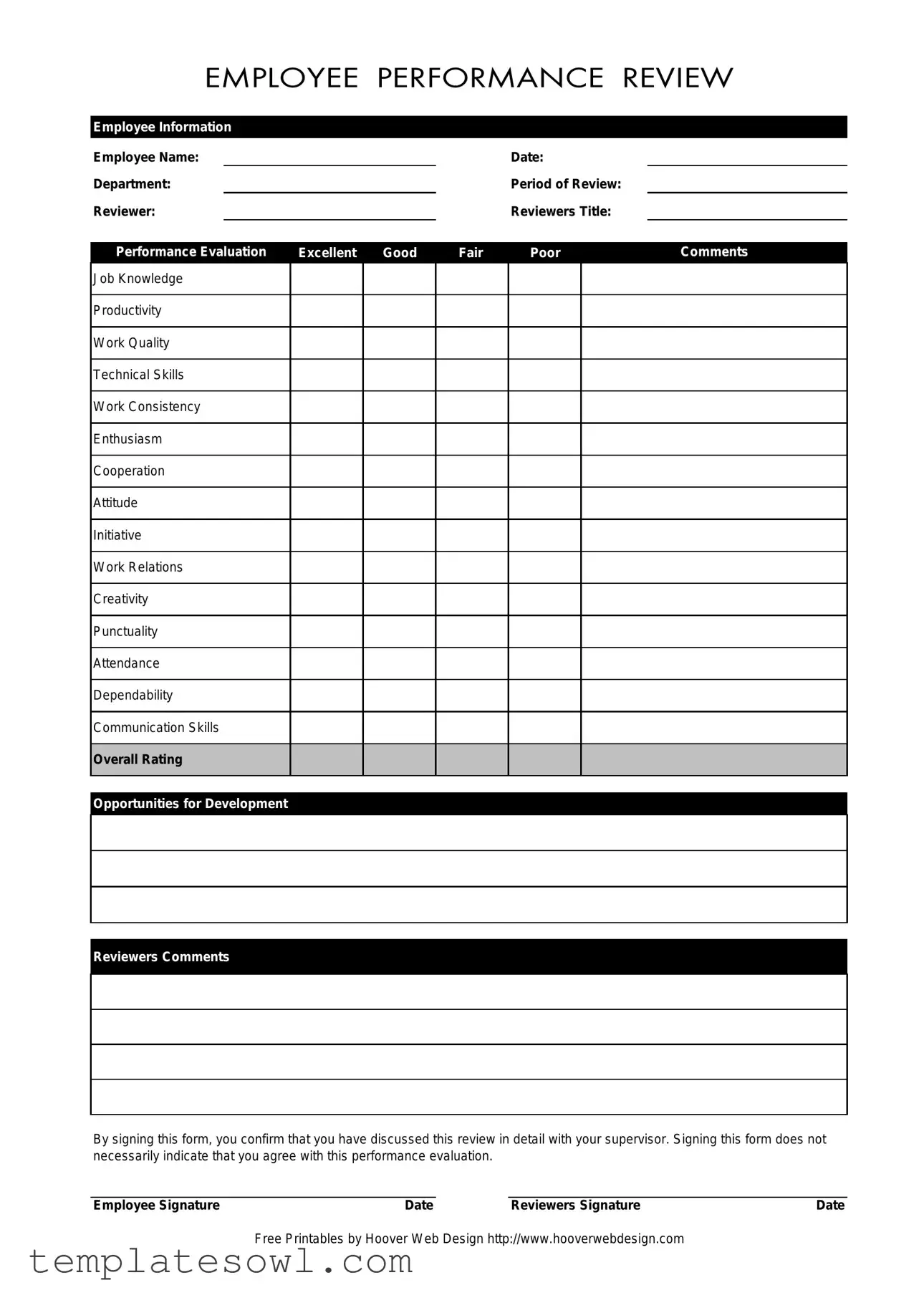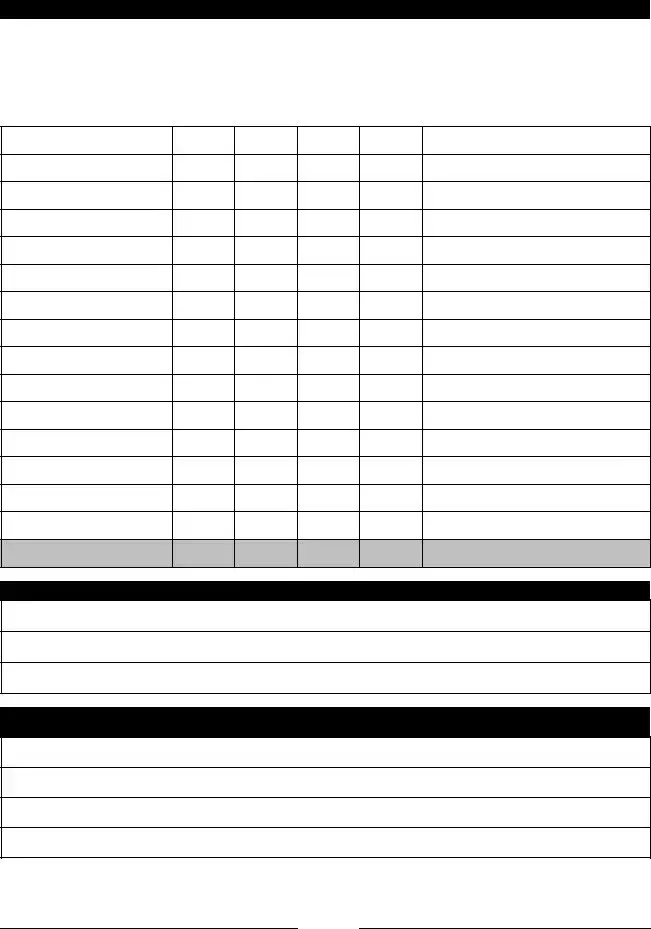What is the purpose of the Employee form?
The Employee form serves as a structured tool for performance evaluations within an organization. It provides a comprehensive overview of an employee's work performance, covering various aspects such as job knowledge and technical skills. By documenting these evaluations, both the employee and the reviewer have a clear understanding of strengths and areas for improvement.
Who fills out the Employee form?
The Employee form is typically filled out by the reviewer, usually a supervisor or manager. They assess the employee’s performance based on predefined criteria. The employee may also be asked to contribute comments or feedback prior to the formal review process.
What sections are included in the Employee form?
The form includes sections for basic employee information such as name, department, and review period. It also features a performance evaluation portion where various skills and work qualities are rated on a scale from excellent to poor. Additionally, there’s space for comments, opportunities for development, and signatures from both the employee and reviewer to confirm discussion of the review.
How are performance ratings determined on the form?
Performance ratings are determined based on a combination of objective metrics and subjective judgment. Reviewers evaluate an employee's skills such as productivity, punctuality, and communication. They often consider specific examples or achievements to justify the ratings provided. Consistency among all categories ensures a well-rounded assessment.
What does signing the Employee form signify?
Signing the Employee form indicates that the employee has discussed the performance review with their supervisor. However, it’s important to note that signing the form does not always imply agreement with the evaluation. This step serves as an acknowledgment of the discussion rather than an endorsement of the review itself.
Can employees give feedback on their evaluations?
Yes, employees generally have the opportunity to provide feedback on their evaluations. This can occur before or after signing the form, depending on company policy. Constructive feedback from employees can lead to more productive discussions about their performance, as well as future goals and development opportunities.
What happens if an employee disagrees with their evaluation?
If an employee disagrees with their evaluation, they should approach their reviewer to discuss their concerns. Open communication can lead to clarification or potential adjustments in the evaluation. Companies often have procedures in place for addressing disputes, which may involve additional feedback or a secondary review.
How often is the Employee form completed?
The frequency of completing the Employee form often depends on company policy. Common practices include annual reviews, semi-annual evaluations, or quarterly check-ins. Regular evaluations help track performance over time and adjust goals as necessary, ensuring ongoing development and engagement.
Where can I find resources to assist with the Employee form?
To find resources related to the Employee form, employees and reviewers can often consult their HR department for guidance. Additionally, there are numerous templates and tips available online that can aid in completing the form effectively. Websites like Hoover Web Design also provide free printables that might be useful as reference materials.

